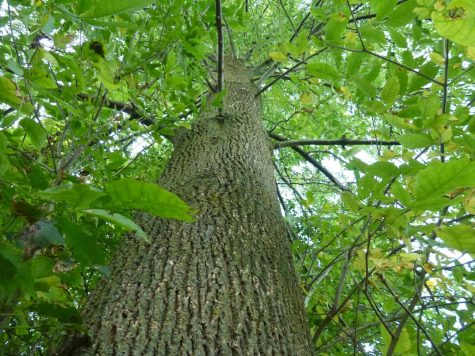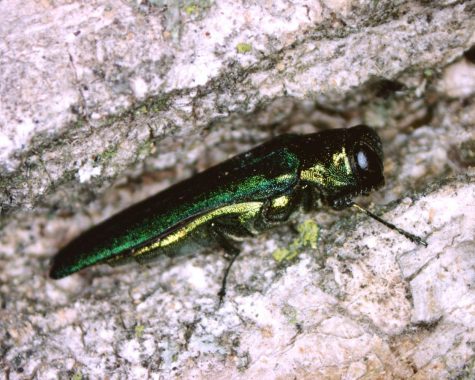Ash Tree Depletion Spreads Nationwide
September 28, 2017
Fraxinus, otherwise known as the Ash Tree, is facing its demise as a bark-eating beetle grows hungrier every day. The Emerald Ash Borer (EAB) was mistakenly brought to the U.S. in the early 2000’s in a shipping container coming from its native northeast Asia.
On Sep. 14, 2017, five of six species of Ash Tree was placed on the Critically Endangered (the last category before Extinction) list. Formed by the IUCN, with the trees sixth species barely holding onto remaining Endangered.
Before the Borer’s began their feast, Ash Tree’s decorated neighborhoods, parks, and campuses across the Midwest. With some species living up to 260 years, and quality of materials to be made out of the wood, experts are trying to figure out any possible way to save them.
America’s most popular species include the Green, White, and Black Ash, calculated to have once made up nine billion of forested trees according to Science Daily (SD). Murphy Westwood, IUCN Global Tree Specialist Group affiliate also told SD “Ash trees are essential to plant communities of the United States.” and that an estimated 80 percent or more of these trees will be affected in some way.
Emerald Ash Borers were identified in Dupage County in 2007, although already being spotted in Illinois a year earlier. According to the Daily Herald, Arlington Heights has removed some 10 thousand Ash Trees in the last decade, “At the end of this year, village officials expect $8 million will have been spent to remove, replace and treat trees since 2006.”
After close to 15 years in the States, EAB’s have destroyed an estimated 20 million midwestern Ash Trees according to the Forest Preserve District of Dupage County. “Larvae bore through an ash tree’s bark and feed extensively on the tree’s inner tissues, destroying its ability to move food from its roots to its leaves.”
While some treatments–including injections–can take up to 20 years to be effective, EAB’s only need an “unnoticed infestation” to last three growing seasons before the tree is


completely dead.
With EAB populations reaching uncontrollable numbers, scientists predict the total number of Ash Trees to be diminished could possibly reach the billions. Since their arrival, EAB’s have still yet to develop any kind of natural predator as well–letting the population thrive under any condition and ecosystem locally.
Westwood told the Washington Post that EAB populations are “exploding” and have been identified in up to 30 states–mainly from the eastern to midwestern regions.
The Washington Post also quoted Ohio State University entomologist Dan Herms as he calls the borers phenomenon as “the most devastating insect ever to invade North American forests.”
With a future so unclear for such a prominent species of plant that has grazed our forests and pedestrian areas for centuries, the Emerald Ash Borer may bring it all to a tragic end.






















